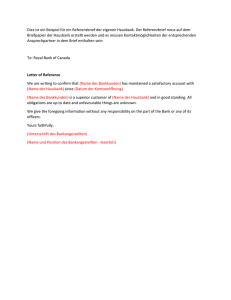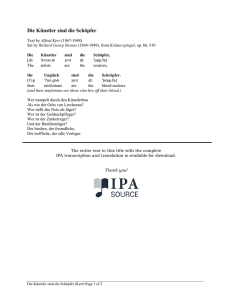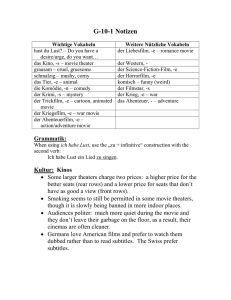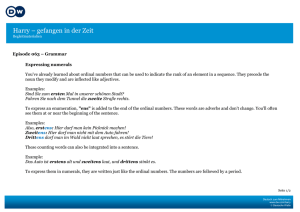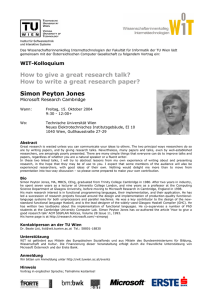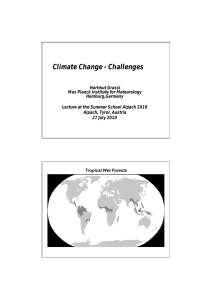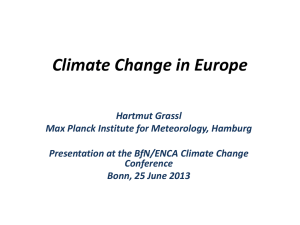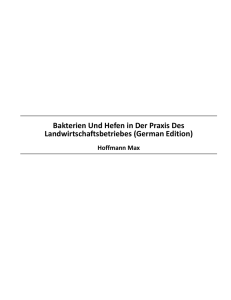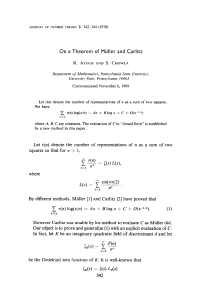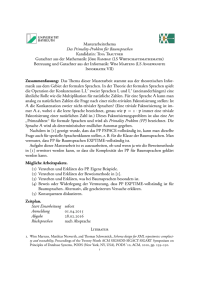T 60.1–60.6 - DPG
Werbung
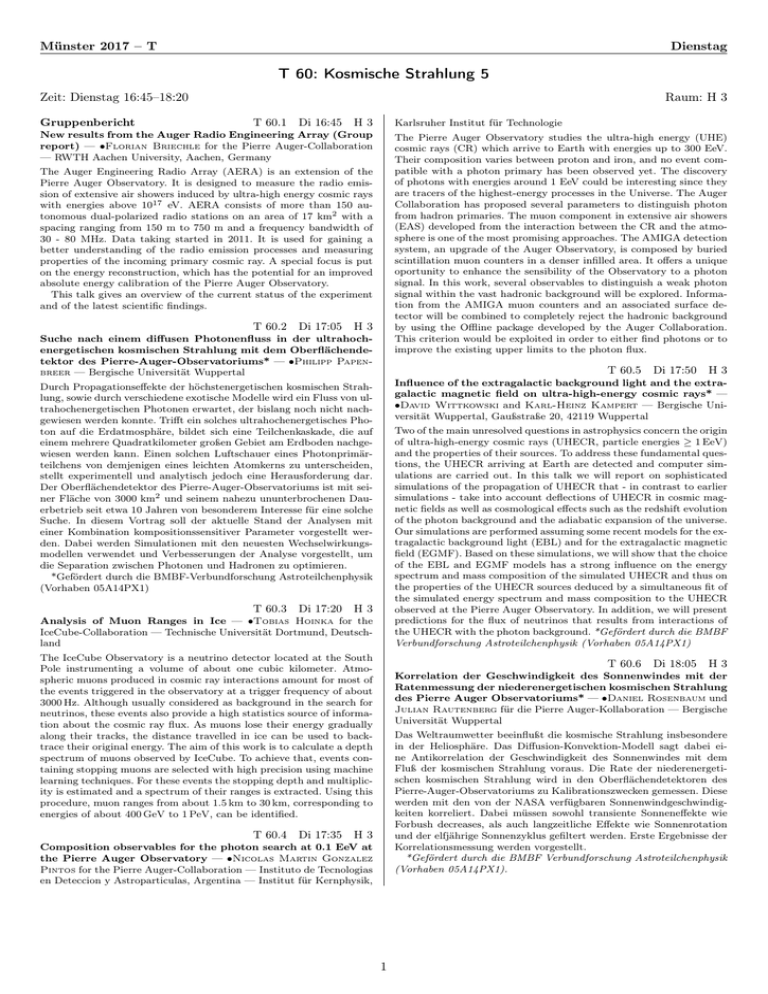
Münster 2017 – T Dienstag T 60: Kosmische Strahlung 5 Zeit: Dienstag 16:45–18:20 Gruppenbericht Raum: H 3 T 60.1 Di 16:45 H3 Karlsruher Institut für Technologie New results from the Auger Radio Engineering Array (Group report) — ∙Florian Briechle for the Pierre Auger-Collaboration — RWTH Aachen University, Aachen, Germany The Pierre Auger Observatory studies the ultra-high energy (UHE) cosmic rays (CR) which arrive to Earth with energies up to 300 EeV. Their composition varies between proton and iron, and no event compatible with a photon primary has been observed yet. The discovery of photons with energies around 1 EeV could be interesting since they are tracers of the highest-energy processes in the Universe. The Auger Collaboration has proposed several parameters to distinguish photon from hadron primaries. The muon component in extensive air showers (EAS) developed from the interaction between the CR and the atmosphere is one of the most promising approaches. The AMIGA detection system, an upgrade of the Auger Observatory, is composed by buried scintillation muon counters in a denser infilled area. It offers a unique oportunity to enhance the sensibility of the Observatory to a photon signal. In this work, several observables to distinguish a weak photon signal within the vast hadronic background will be explored. Information from the AMIGA muon counters and an associated surface detector will be combined to completely reject the hadronic background by using the Offline package developed by the Auger Collaboration. This criterion would be exploited in order to either find photons or to improve the existing upper limits to the photon flux. The Auger Engineering Radio Array (AERA) is an extension of the Pierre Auger Observatory. It is designed to measure the radio emission of extensive air showers induced by ultra-high energy cosmic rays with energies above 1017 eV. AERA consists of more than 150 autonomous dual-polarized radio stations on an area of 17 km2 with a spacing ranging from 150 m to 750 m and a frequency bandwidth of 30 - 80 MHz. Data taking started in 2011. It is used for gaining a better understanding of the radio emission processes and measuring properties of the incoming primary cosmic ray. A special focus is put on the energy reconstruction, which has the potential for an improved absolute energy calibration of the Pierre Auger Observatory. This talk gives an overview of the current status of the experiment and of the latest scientific findings. T 60.2 Di 17:05 H3 Suche nach einem diffusen Photonenfluss in der ultrahochenergetischen kosmischen Strahlung mit dem Oberflächendetektor des Pierre-Auger-Observatoriums* — ∙Philipp Papenbreer — Bergische Universität Wuppertal T 60.5 T 60.3 Di 17:20 H3 The IceCube Observatory is a neutrino detector located at the South Pole instrumenting a volume of about one cubic kilometer. Atmospheric muons produced in cosmic ray interactions amount for most of the events triggered in the observatory at a trigger frequency of about 3000 Hz. Although usually considered as background in the search for neutrinos, these events also provide a high statistics source of information about the cosmic ray flux. As muons lose their energy gradually along their tracks, the distance travelled in ice can be used to backtrace their original energy. The aim of this work is to calculate a depth spectrum of muons observed by IceCube. To achieve that, events containing stopping muons are selected with high precision using machine learning techniques. For these events the stopping depth and multiplicity is estimated and a spectrum of their ranges is extracted. Using this procedure, muon ranges from about 1.5 km to 30 km, corresponding to energies of about 400 GeV to 1 PeV, can be identified. Di 17:35 H3 Two of the main unresolved questions in astrophysics concern the origin of ultra-high-energy cosmic rays (UHECR, particle energies ≥ 1 EeV) and the properties of their sources. To address these fundamental questions, the UHECR arriving at Earth are detected and computer simulations are carried out. In this talk we will report on sophisticated simulations of the propagation of UHECR that - in contrast to earlier simulations - take into account deflections of UHECR in cosmic magnetic fields as well as cosmological effects such as the redshift evolution of the photon background and the adiabatic expansion of the universe. Our simulations are performed assuming some recent models for the extragalactic background light (EBL) and for the extragalactic magnetic field (EGMF). Based on these simulations, we will show that the choice of the EBL and EGMF models has a strong influence on the energy spectrum and mass composition of the simulated UHECR and thus on the properties of the UHECR sources deduced by a simultaneous fit of the simulated energy spectrum and mass composition to the UHECR observed at the Pierre Auger Observatory. In addition, we will present predictions for the flux of neutrinos that results from interactions of the UHECR with the photon background. *Gefördert durch die BMBF Verbundforschung Astroteilchenphysik (Vorhaben 05A14PX1) Analysis of Muon Ranges in Ice — ∙Tobias Hoinka for the IceCube-Collaboration — Technische Universität Dortmund, Deutschland T 60.4 Di 17:50 Influence of the extragalactic background light and the extragalactic magnetic field on ultra-high-energy cosmic rays* — ∙David Wittkowski and Karl-Heinz Kampert — Bergische Universität Wuppertal, Gaußstraße 20, 42119 Wuppertal Durch Propagationseffekte der höchstenergetischen kosmischen Strahlung, sowie durch verschiedene exotische Modelle wird ein Fluss von ultrahochenergetischen Photonen erwartet, der bislang noch nicht nachgewiesen werden konnte. Trifft ein solches ultrahochenergetisches Photon auf die Erdatmosphäre, bildet sich eine Teilchenkaskade, die auf einem mehrere Quadratkilometer großen Gebiet am Erdboden nachgewiesen werden kann. Einen solchen Luftschauer eines Photonprimärteilchens von demjenigen eines leichten Atomkerns zu unterscheiden, stellt experimentell und analytisch jedoch eine Herausforderung dar. Der Oberflächendetektor des Pierre-Auger-Observatoriums ist mit seiner Fläche von 3000 km2 und seinem nahezu ununterbrochenen Dauerbetrieb seit etwa 10 Jahren von besonderem Interesse für eine solche Suche. In diesem Vortrag soll der aktuelle Stand der Analysen mit einer Kombination kompositionssensitiver Parameter vorgestellt werden. Dabei werden Simulationen mit den neuesten Wechselwirkungsmodellen verwendet und Verbesserungen der Analyse vorgestellt, um die Separation zwischen Photonen und Hadronen zu optimieren. *Gefördert durch die BMBF-Verbundforschung Astroteilchenphysik (Vorhaben 05A14PX1) T 60.6 Di 18:05 H3 Korrelation der Geschwindigkeit des Sonnenwindes mit der Ratenmessung der niederenergetischen kosmischen Strahlung des Pierre Auger Observatoriums* — ∙Daniel Rosenbaum und Julian Rautenberg für die Pierre Auger-Kollaboration — Bergische Universität Wuppertal Das Weltraumwetter beeinflußt die kosmische Strahlung insbesondere in der Heliosphäre. Das Diffusion-Konvektion-Modell sagt dabei eine Antikorrelation der Geschwindigkeit des Sonnenwindes mit dem Fluß der kosmischen Strahlung voraus. Die Rate der niederenergetischen kosmischen Strahlung wird in den Oberflächendetektoren des Pierre-Auger-Observatoriums zu Kalibrationszwecken gemessen. Diese werden mit den von der NASA verfügbaren Sonnenwindgeschwindigkeiten korreliert. Dabei müssen sowohl transiente Sonneneffekte wie Forbush decreases, als auch langzeitliche Effekte wie Sonnenrotation und der elfjährige Sonnenzyklus gefiltert werden. Erste Ergebnisse der Korrelationsmessung werden vorgestellt. *Gefördert durch die BMBF Verbundforschung Astroteilchenphysik (Vorhaben 05A14PX1). H3 Composition observables for the photon search at 0.1 EeV at the Pierre Auger Observatory — ∙Nicolas Martin Gonzalez Pintos for the Pierre Auger-Collaboration — Instituto de Tecnologias en Deteccion y Astroparticulas, Argentina — Institut für Kernphysik, 1
